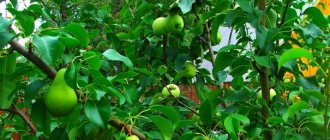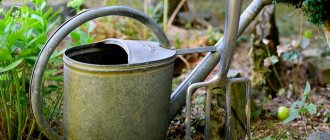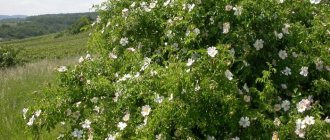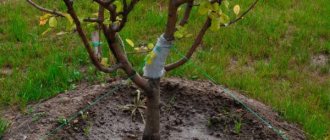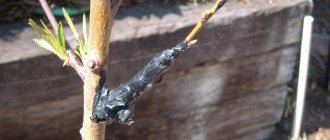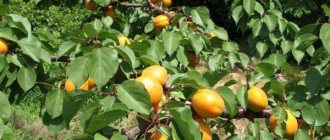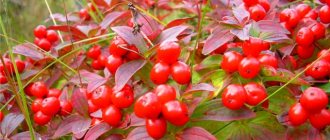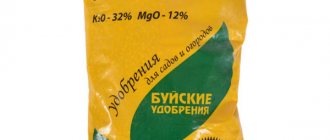Advantages of the method
Fruit trees and other cultivated plants can be grafted in various ways, but budding has a number of undeniable advantages:
- Simplicity of the procedure. If you follow all the basic recommendations, even a beginner can cope with the task. And such an operation will take very little time.
- The grafting area is small, so the rootstock is almost not damaged.
- Minimum amount of scion material. For successful establishment of a new variety, just one bud is enough. It is also possible to bud several rootstocks from one cutting.
- High efficiency. This method guarantees the maximum percentage of shoot survival, and no special conditions are required.
- If attempts are unsuccessful, budding can be repeated many times on the same rootstock.
- Short time. New shoots are obtained in the same season or at most the next.
Rules for how apple tree budding should be done in summer
In order for the apple tree grafting operation to be successful, you must adhere to the following rules:
- The material for vaccination must be healthy;
- The cut on the rootstock must be made with a sharp, disinfected instrument;
- The length of the cut on the rootstock should correspond to the size of the cultivated bud;
- The cambium of the bud and the rootstock should fit perfectly: without bending into the bark, without displacement;
- Contamination of the connection point is not allowed;
- The operation must be carried out quickly;
- The winding that secures the alignment should be neither loose nor too tight;
- The variety and type of tree of the rootstock and scion must be genetically compatible.
Compatibility of scion and rootstock.
When to do budding
This type of grafting can be performed twice a year, during the period of active movement of sap in the trees:
- in early spring, when buds appear;
- in summer, late July - early August.
At this time, the bark of the rootstock is easier to separate, plant cells are dividing intensively, and nutrients move from the roots and wood to the buds. All this contributes to a more successful result.
Spring budding
It is done with an eye that appeared last summer. To carry it out, it is necessary to prepare cuttings in the fall. But already in the current season the bud will sprout, and a new shoot will come from it. It is the grafting in the spring that is considered the most favorable for young plants. The second name of this method is “budding with a germinating eye.”
Summer budding
Grafting with a bud formed this season. The “eye” is cut off from the scion immediately before the procedure. The transplanted bud must take root, survive the winter and grow again next spring.
This method is also called “sleeping eye budding.”
What's interesting about summer budding
Summer tree grafting is unusual for novice gardeners, but in vain - this method has many advantages, but practically no disadvantages. A significant plus: it takes less time to cultivate a tree, and this value is equal to a year.
There are other advantages of the grafting method:
- you can quickly graft material, including rare varieties;
- there is no need for winter storage of cuttings, there is less waste;
- by summer you can 100% assess the condition of the rootstock, its strength;
- in summer, vaccinations take root better and do not require close attention;
- immediately before wintering it will be clear whether the event was a success.
It is best to graft an apple tree, as well as trees of other varieties, in the summer. The main thing is that the tree is not old; ideally, the rootstock is root shoots and seedlings.
It is advisable that the thickness of the branch on which the eye is grafted be at least one and a half centimeters, this will increase the chance of success.
Budding methods
There are two most common techniques for kidney grafting: in the butt and in the incision. But in both cases, it is necessary to take into account the following requirements for the plants participating in the process:
- the optimal scion size is from 5 to 12 mm;
- the bark of the rootstock should be young and soft;
- internodes should be chosen perfectly smooth, without defects;
- Only fully formed and finally ripe buds are suitable.
In the butt
The simplest technique is in which a small section of bark is removed from the internode of a plant taken as a rootstock, and in its place an equal-sized plate with a bud, cut from the cutting of interest, is applied.
This is done in several stages:
- Prepare a special budding knife or just a sharp knife and braid or stretch tape to wrap the grafting site. Wipe the internode of the rootstock on which you will make the cut thoroughly with a soft, damp cloth.
- Make a shallow cut along the shoot - no more than 3 cm - where you plan to plant a new plant, without completely removing the bark. Cut off about a third from the resulting “tongue”.
- From the bark of the cutting, remove a plate with a bud exactly the same size as the cut on the rootstock.
- Place a piece of bark with a bud at the budding site, placing it under the “tongue”. It is important that the plate completely coincides with the cut made on the shoot, or at least one of its edges.
- Wrap the grafting area tightly with special tape or film. In this case, the kidney can be left either outside or hidden under the winding.
The result will be noticeable on about the 15th day.
With this method of budding, the shoot above the grafted bud can be cut off only when complete fusion occurs, and best of all, after a new shoot appears.
An undoubted advantage of butt budding is that there is no need to peel off the bark of the rootstock, due to which the grafting period is noticeably longer than with shield budding - from mid-July to the end of August.
In the cut
In this case, the bud to be grafted is implanted into the cambium of the selected plant through a cut in the bark. Therefore, the timing of execution is of great importance here. The best result is achieved at the peak of sap flow, since at this time the plant bark easily peels off, which simplifies the insertion of a bud into the slot on the rootstock.
What is the procedure:
- From the desired cutting, cut off a bud with a knife along with a small fragment of bark and wood about 2 - 3 cm long and about 0.5 cm wide. To make such a shield convenient to take with your hands, it is better to choose a bud with a petiole or cut a plate with a margin of half a centimeter, which after scion overlays can be removed.
- Make a T-shaped cut on the rootstock so that it matches the dimensions of the prepared shield. In this case, you first cut the bark horizontally, and then vertically. Carefully move the edges of the vertical cut to create a pocket for the scion.
- Place the shield into the resulting recess from top to bottom so that its lower edge is held by the narrow part of the pocket. If the top edge of the plate protrudes beyond the cut, carefully use a knife to trim it flush with the horizontal line.
- Now, starting from the bottom, wrap the shield with tape, pressing it tightly against the rootstock. There is no need to cover the kidney.
If the vaccination was carried out in the spring, then if the result is successful, after 15 days the kidney will begin to grow. During summer budding - after about the same time - the petiole above the grafted bud should come off easily.
Budding is a universal technique for breeding new varieties. This method can be used to graft not only apple trees, pears or apricots, but also almost any plant, even roses.
I suggest you watch a video about grape budding, which shows the whole process in detail and in an accessible way.
Rules and features of the procedure on an apple tree
The climatic conditions of the region play a decisive role in choosing the season for budding apple trees. For example, spring selection in Omsk and the region will differ in timing from grafting in Volgograd. The early growing season of fruit crops in the south allows budding to begin in March or even February.
In Ukraine, the seasons change gently, which significantly extends the budding period for apple trees in the summer. The butt method can be used at any time until mid-October.
For northern regions, it is better to budding apple trees in winter or spring. Where the climate is too harsh, such as in Siberia, you need to take into account that the preparations need to be stored somewhere. If there is a room in which a constant low positive temperature is maintained, it is better to use winter grafting. It is not advisable to do budding in summer, because... there is a possibility that the graft will not have time to take root well and will not be ready to survive the winter cold.
Preparatory activities
To carry out work on budding apple trees, you need to prepare a set of tools and materials. To work you will need:
- a set of sharpened knives for grafting;
- wood saw or pruning shears;
- polyethylene narrow tapes.
Preparing a kidney
After making a cut, it needs to be treated with a special agent. This will prevent pathogenic bacteria and parasites from damaging open areas. A garden pitch is suitable for these purposes. They tightly cover the injured part of the plant. You can buy the product in a store or make it yourself. To do this, take one part of mullein and fatty resin. Mix thoroughly, and add fluff for thickness. The result is a “medicine” that has good healing properties.
To obtain a good grafting result, you need to choose similar varieties as a scion and rootstock. The best rootstock will be the variety that consistently produces good yields under existing climatic conditions. It is advisable to harvest the scion from apple trees that bear fruit for at least two seasons.
Making a cut
Options for budding apple trees
Options for grafting apple trees depend on the grafting material, seasonality and personal preference. There are several types of budding:
- with or without bark. In the first case, the bud is cut off along with a piece of wood. However, for successful survival, it is better that the implanted kidney does not contain bark. To do this, budding is performed with a sleeping eye;
- outside or inside. In order not to waste time, if one method does not produce results, it is better to plant the apple tree in both places. This is especially important for rejuvenating old trees or for preserving a variety, and the number of cuttings is limited. Two buds are placed on different sides of the rootstock, one above the other. If both take root, then they simply choose the strongest one and remove the second one;
- high or low. The young scion is grafted 5-7 cm higher than the root neck of the tree. When working with identical rootstocks, the height is increased to 10-12 cm. On short and medium-sized trees, budding is performed quite high - from 30 to 60 cm, respectively. Highly grafted seedlings begin to bear fruit quite quickly. The disadvantage of this method is that the yield may decrease.
In addition to the options, budding methods are also chosen. In summer it can be made without wood and in the butt. The first option gives a better chance of scion survival. The second one is suitable for situations where the first one is not suitable, because The bark of the tree no longer comes off.
Apple tree budding procedure
Spring grafting is done by copulation, with a tongue, into a split, behind the bark and into a side cut. Copulation is suitable if the rootstock and scion are of the same thickness. They are applied in slices of equal circumference to each other. A more difficult procedure is the graft with a tongue. It involves creating a small additional incision in the cut. To graft into a cleft, the scion and rootstock must be of the same diameter. Budding by the bark is done through a cut of the cutting along with the stump. Before grafting into a side cut, you need to make two oblique cuts on the cutting, which are connected at the bottom. An incision is made on the rootstock, which is bent and the scion is inserted into it.
Budding an apple bud into a T-shaped incision
If you perform budding according to all the rules, you can achieve excellent results in selection. Grafting different varieties of apple trees will improve the garden area and make it more diverse.
Useful tips
Be sure to pay attention to this section to avoid the most serious mistakes when carrying out budding:
- Choose the healthiest buds, which are located in the middle part of the cutting.
- Do not graft on the south side of the rootstock. Bright sun can cause burns to the eye.
- Under no circumstances should the procedure be performed during rain.
- Do not use putty as this may cause the scion to rot.
- Only annual seedlings with branches no more than 10 mm thick are suitable for budding.
- If you are planting several buds at once, the distance between them should be from 15 to 20 cm.
- The lowest “eye” should be located 30 cm higher from the branching point of the trunk.
- On hot summer days, it is better to do budding in the morning or evening.
- In dry weather, it is important to thoroughly water the rootstock two weeks before grafting.
Tips from experienced gardeners
Each business has its own subtleties and grafting fruit trees is no exception. Some tricks that greatly increase the chances of success can be found below:
- Many questions arise about the age of the tree, but everything is simple: if the branches do not exceed 11 mm in thickness, you can use the budding method. For thicker shoots, it is better to plant with cuttings in the spring.
- Avoid grafting on the south side of the tree: this is where the sun is most active and the budding is most likely to dry out.
- Budding with two eyes gives good results. They are grafted on opposite sides of the branch in approximately the same place, then tied with plastic strips.
- Use garden varnish to a minimum, only in places where it is impossible to tie the graft.
- If necessary, several eyes can be grafted onto the rootstock at once, but the distance between them should not be less than 15 cm, in which case survival can be guaranteed.
- Always retreat at least 25 cm from the fork of the trunk. If this is not done, the graft most likely will not take root.
- If the bandage was removed and it was discovered that the event was unsuccessful, you can check the condition of the bark. If it separates, it means there is still time for re-budding. No - postpone the work until the next season.
- Budding should not be done in the rain or on a hot, sunny day. In the latter case, the preferred time is morning and evening hours.
- It is fashionable to increase the chances of survival by abundant watering of the rootstock. It is especially necessary during drought, which is a frequent visitor at this time of year.
The success is influenced by the strength of the shoot from which it is planned to cut eyes. You can determine it by a simple method: bring the branch to your ear and bend it slightly. A dry cracking sound indicates that the shoot can be used for your purposes.
The strongest and strongest growth buds are located approximately in the middle of the shoot; they need to be grafted first.
Remember that when starting budding, it is unwise to focus on the deadlines indicated in newspapers, magazines and websites: everything is individual in the regions. Pay attention to the condition of the trees every day, check the maturity of the shoots by ear, then you will not miss the favorable time for grafting fruit trees. If you have any doubts, find local gardeners, they will tell you exactly when to start the event and share their tricks.
Two-year cycle of growing two-year-old apple trees
According to this scheme, grafting is carried out at a height of 10 cm from the ground. On the grown scion, in the second year it will be possible to budding the desired variety - such a graft will turn out to be higher. This material will tell you what to do if hares gnaw an apple tree.
The distance between the first graft and the new varietal should be about 18 cm.
As a result, you should get a dwarf variety on a seed-type rootstock, which will be responsible for the growth rate of the apple tree. In regions with a warm climate, the grafting site is located above the bud; if the weather conditions are quite severe, it is recommended to deepen the tree trunk to the budding site (in this case, you will be able to spud up and insulate the graft in the fall).
Variety of vaccinations
There are several ways to graft fruit trees. They differ in the type of scion.
According to the technique of implementation, vaccinations are distinguished:
- Wedge.
- In the butt.
- In schism.
- Dudka.
- In the side cut.
- For the bark.
- Budding into a T-shaped shield.
- Improved or direct copulation.
- Budding in the butt.
These methods are the most popular. But in practice, many gardeners use only 5 of them.
Vaccinations are also distinguished according to the location of the scion. They can be performed on the following part of the plant:
- Root.
- Crown branches.
- Trunk.
- Stump.
In addition, the scion can be located either from above or from the side. Grafting from above requires cutting off the top of the plant. This way a new variety will form at the top of the tree. A lateral graft is formed from the side of the trunk, without cutting off the top of the rootstock.
Preparation
They start by preparing cuttings. This refers to well-ripened long (from 40–50 cm) annual shoots, cut from the middle or upper part of the crown no earlier than 2–3 days before budding. All leaves must be removed from them immediately, leaving petioles 5–10 mm long. The cuttings are tied with a rag and before grafting they are treated like cut flowers (that is, the lower parts are immersed in a container of water and kept in a cool place).
Right before budding, the operation site on the rootstocks should be wiped with a damp cloth and, if necessary, excess branches and thorns should be cut off.
Photo: Nina Belyavskaya 2–3. Repeat the same on the cutting: start under the bud. Photo: Nina Belyavskaya
Checking the survival rate of the kidneys after budding
Two weeks after budding the apple tree in the summer, you can determine how well the buds have taken root. To inspect the graft, the wrapping is loosened, trying not to disturb the eye, and then the wrapping is made again, which should remain in place until September.
The good health of the eye is indicated by a dried leaf petiole and the shiny surface of a slightly enlarged bud. If the procedure was unsuccessful, but the weather allows you to repeat the budding, the grafting is repeated in any suitable way, but above or below the dried cut or on the other side of the shoot.
Procedure Definition
Budding is a method of grafting using a single bud (eye) taken from a cutting of a fruit crop.
In horticulture, budding is especially widely used for the purpose of propagating fruit trees and shrubs, as well as ornamental plants. In this case, young specimens are usually grafted into the root collar or slightly higher. An established bud begins to grow in the spring of the next season. A bush or tree is formed from the resulting shoot, and then planted in a permanent place of growth. Budding is applicable for re-grafting not only young, but also adult cultures that have undergone preliminary rejuvenation before a procedure consisting of several steps:
- a cut is made on the bark of the rootstock without damaging the cambium;
- a kidney is inserted into the resulting slot;
- Putty or garden varnish is applied to the joint.
Summer grafting of an apple tree with a “butt” bud
Such budding of an apple tree in summer can be useful if:
- time is lost, and the bark of the rootstock for the apple tree no longer comes off;
- the rootstock is too thick or, conversely, thin for the grafting methods already discussed.
When making a cut on the rootstock, in this case, the grafting knife is placed at an angle and, by analogy with budding with a bud, a semicircular incision is made, but along with the bark, cutting through a small layer of wood. The bark from the rootstock area is cut off, making a second cut 25–30 mm higher from the first cut. The shield from the scion is cut to approximately the same size as the prepared area on the rootstock, after which it is inserted directly from the knife into the place allocated for it and the grafting site is wrapped.
What is budding grafting, goals and scope of application (which trees can be grafted)
The essence of budding (eye grafting) is that not a whole cutting is grafted onto the rootstock, but only a scion bud (eye) cut from it (with a thin layer of wood, also called “with a shield”)
. In other words, budding is the transfer of a bud from one tree (cultivated variety) to another (non-varietal, i.e. wild).
As a result, in the spring of next year, the implanted bud begins to grow, a shoot grows from it, from which a tree is subsequently formed.
Accordingly, this method is used for grafting young wild seedlings (1-3 years old);
In very rare cases, budding is used to graft young skeletal branches (1-3 years old) of mature trees.
The main advantages of vaccination using the budding method include:
- high survival rate (literally 95%);
- low cost of grafting material.
That is why this grafting method is usually used by farmers in nurseries when they propagate (grow) seedlings for sale.
By budding, you can graft all pome (apple, pear, quince) and stone fruit (cherries, cherries, plums, apricots, peaches) fruit trees.
Don’t forget about compatibility: stone fruits are grafted only onto stone fruits, and pome fruits – onto pome fruits (related crops):
- A pear can be grafted onto an apple tree and vice versa, but optimally - apple tree on apple tree, pear on pear (i.e. single-species).
- But you won’t be able to graft a plum onto an apple tree (and vice versa).
How to prepare cuttings for grafting?
The success of budding largely depends on the correct choice of material. Both the scion and the rootstock must be taken from healthy plants.
Annual shoots 30-35 cm long and 7-8 mm in diameter, cut from the upper branches of a well-fruiting, middle-aged tree, are best suited for the role of scion. In this case, it is important that the shoot-cutting is mature with a fully formed bud.
You need to cut the cuttings with a sharp knife
It is necessary to remove the leaves from the cut cuttings so that their petioles remain on the scion. This will make it more convenient to vaccinate with the eye.
Please note that only freshly harvested cuttings are grafted.
Time of vaccination
The timing of fruit tree budding varies. This procedure can be performed in spring, summer and winter.
Vaccination in spring is carried out during a period of intense sap flow. In this case, the scion is harvested at the end of autumn or at the very beginning of spring, when it is still in dormant mode. Spring vaccination is carried out in April or May. Make sure that the buds have not yet had time to swell.
In the summer, vaccination should be done from July. Dates for summer budding of fruit trees: from July 20 to August 31. Shoots and buds that have been well developed throughout the year are used as a scion.
Winter vaccination is carried out indoors. It is during the winter months that the seedlings grow together. And in the spring, already grafted plants are planted in the ground. Vaccination can be done in winter. The main thing is that the air temperature should not be below +2°C.
The most productive vaccinations are considered to be summer and autumn. Indeed, during this period, the tree bark moves well away from the trunk, and the cambium, in turn, divides well. Therefore, the procedure is greatly simplified, which ensures good kidney survival.
Application practice
The budding method is convenient and effective.
If the grafting rules are followed, the survival rate of the scion is almost 100 percent. Therefore, the method is widely used.
Budding an apple tree to wild allows you to give the cultivated variety additional qualities, for example, winter hardiness or drought resistance. Sweet, aromatic varieties of southern apples can successfully grow and develop in rather harsh conditions.
In this way, zoned varieties are obtained.
Budding is used in the production of planting material. Growing apple tree seedlings by budding takes only one year. In addition, this grafting method allows you to grow planting material not only during the warm planting season, but also in winter.
Although this type of grafting is mainly used on young seedlings up to three years old, it is possible to budding an adult apple tree . Especially if the fruits have become smaller or fruiting has decreased. Grafting the same variety will help rejuvenate the tree.
Different varieties of apple trees can be grafted into the crown of an adult tree . This is very convenient if you want to try to grow new varieties, but space on the plot is limited.
TIP: There are limitations when grafting different varieties onto the same tree. It is desirable that the growth rates of the rootstock and scion coincide .
This discrepancy can make the survival of apple tree buds on rootstocks of a different species unsuccessful.
You can grow different varieties of apple trees on one tree.
The compatibility of apple and pear trees during budding has been confirmed not only theoretically, since both plants are pome-bearing, but also practically.
Many gardeners successfully graft an apple tree onto a pear tree and vice versa. This procedure can serve two purposes:
- Using pear exclusively as a rootstock;
- Getting a tree that grows apples and pears at the same time.
However, well-established vaccinations eventually disappoint summer residents.
IMPORTANT! The growth rate of pear trees significantly exceeds the development rate of apple trees. Abundant fruiting does not occur; after 3-7 years the graft dies off.
Rowan rootstock is often the basis for grafting small-fruited apple trees. It is used to reproduce different types of china. This combination gives good results.
Small-fruited apple trees and mountain ash are similar in growth rates . Budding an apple tree onto rowan increases the winter hardiness of the seedling. In addition, rowan rootstock makes it possible to reduce the height of the usually tall china.
Grafting large-fruited apple trees onto rowan is short-lived.
By studying the methods of how apple and pear grafting should be carried out (budding), you can significantly expand the capabilities of your orchard.
